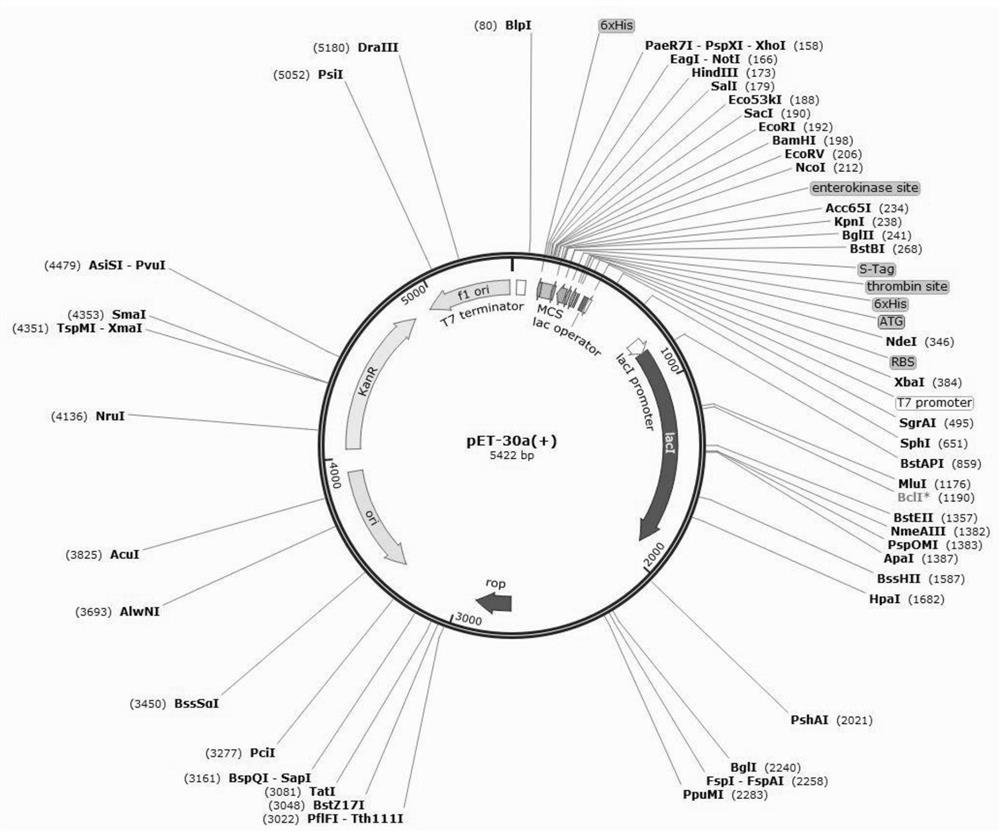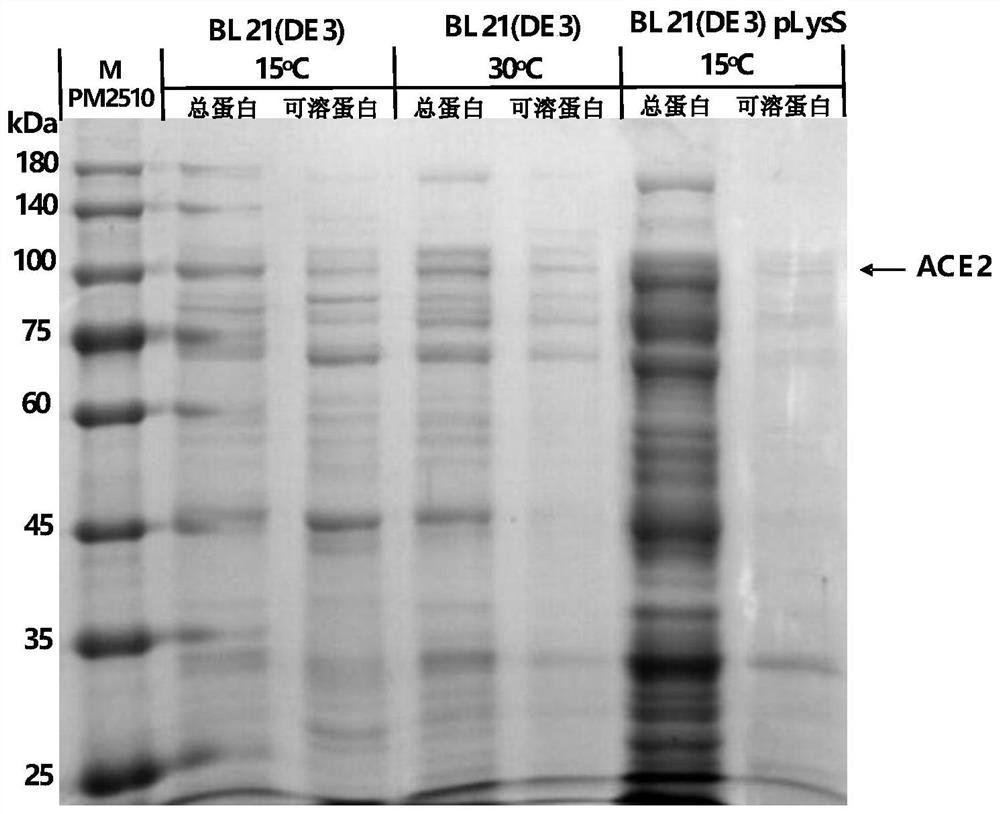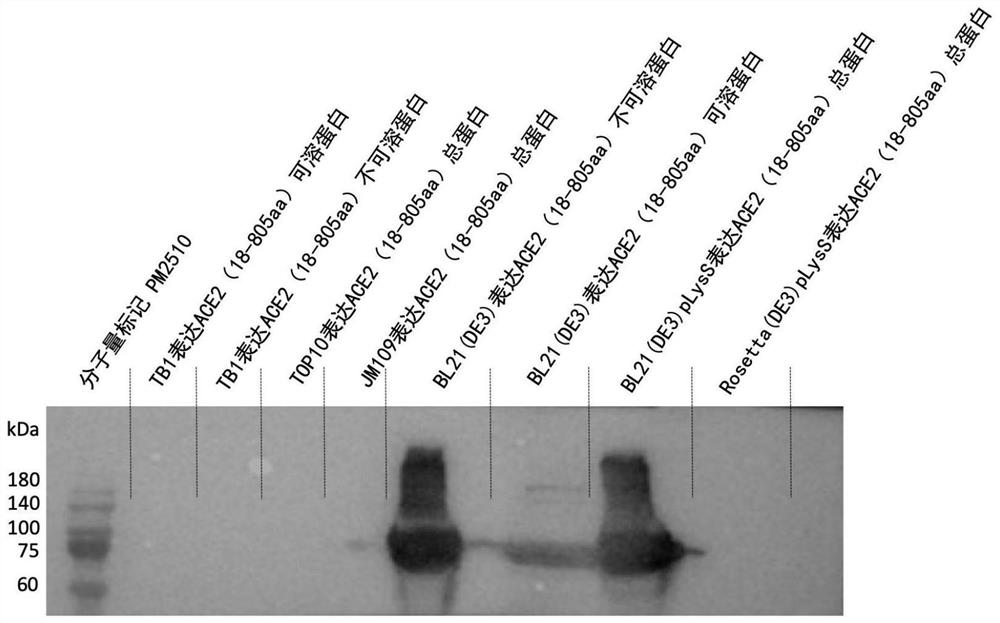Method for realizing fermentative expression of angiotensin converting enzyme 2 by using prokaryotic cell
A technology of prokaryotic organisms and extracellular regions, which is applied in the biological field to achieve the effects of large protein extraction, increased water solubility, and low price
- Summary
- Abstract
- Description
- Claims
- Application Information
AI Technical Summary
Problems solved by technology
Method used
Image
Examples
Embodiment 1
[0068] Embodiment 1 uses the design and result analysis of expressing ACE2 in Escherichia coli
[0069] The first step is to construct a recombinant expression vector with a HIS tag or a Strep-II tag.
[0070] Wherein, the ACE2 (18-805aa) target protein sequence is the sequence of SEQ ID NO.1;
[0071] The nucleotide sequence corresponding to the amino acid sequence of SEQ ID NO.1 is the sequence of SEQ ID NO.2;
[0072] ACE2 (18-740aa) target protein sequence is the sequence of SEQ ID NO.3;
[0073] The nucleotide sequence corresponding to the amino acid sequence of SEQ ID NO.3 is the sequence of SEQ ID NO.4;
[0074] ACE2 (18-615aa) target protein sequence is the sequence of SEQ ID NO.5;
[0075] The nucleotide sequence corresponding to the amino acid sequence of SEQ ID NO.5 is the sequence of SEQ ID NO.6;
[0076] The nucleotide sequence of the empty vector (derived from pET-30a(+)) used was set as SEQ ID NO.7.
[0077] It should be noted that the sequences inserted in...
Embodiment 2
[0129] Example 2 Production process and result analysis using Corynebacterium glutamicum to express ACE2
[0130] The first step is to construct a recombinant expression vector (with signal peptide)
[0131] In order to improve the expression effect, in particular a signal peptide sequence was also inserted before the ACE2 gene.
[0132] The plasmid constructed here is pXMJ19, and the involved signal peptide Sec signal peptide BZH001-cspB has the sequence SEQ ID NO.8:
[0133] ATGTTCAACAACCGTATCCGTACCGCCGCCCTCGCAGGTGCCATCGCAATCTCTACCGCAGCGTCTGGTCTGGTGGTCCCCAGCATTCGCTCAGGAA; alternatively, the TAT signal peptide CGR0949 is used, which has the sequence SEQ ID NO.9:
[0134] ATGCAAATAAACCGCCGAGGCTTCTTAAAAGCCACCGCAGGACTTGCCACTATCGGCGCTGCCAGCATGTTTATGCCAAAGGCCAACGCCCTTGGAGCA.
[0135] The second step is to select the expression host bacteria and introduce the vector
[0136] The selected strain was C. glutamicum CGMCC1.15647 (BZH001). Similar to Example 1, the engineering plasm...
PUM
 Login to View More
Login to View More Abstract
Description
Claims
Application Information
 Login to View More
Login to View More - R&D
- Intellectual Property
- Life Sciences
- Materials
- Tech Scout
- Unparalleled Data Quality
- Higher Quality Content
- 60% Fewer Hallucinations
Browse by: Latest US Patents, China's latest patents, Technical Efficacy Thesaurus, Application Domain, Technology Topic, Popular Technical Reports.
© 2025 PatSnap. All rights reserved.Legal|Privacy policy|Modern Slavery Act Transparency Statement|Sitemap|About US| Contact US: help@patsnap.com



